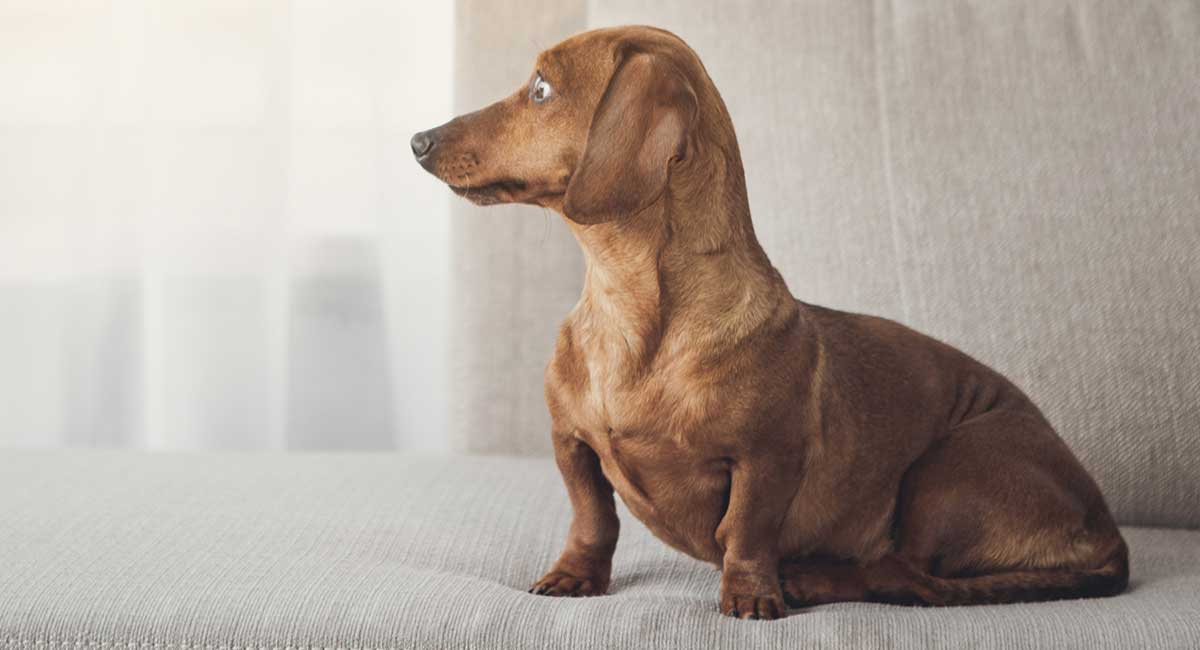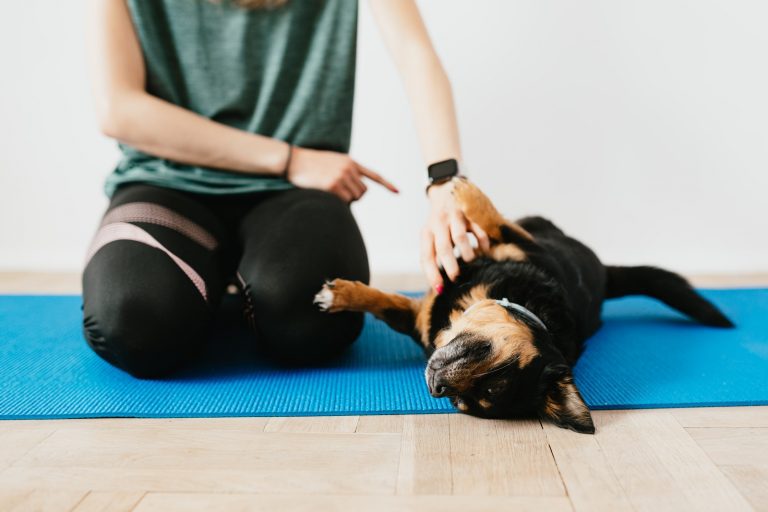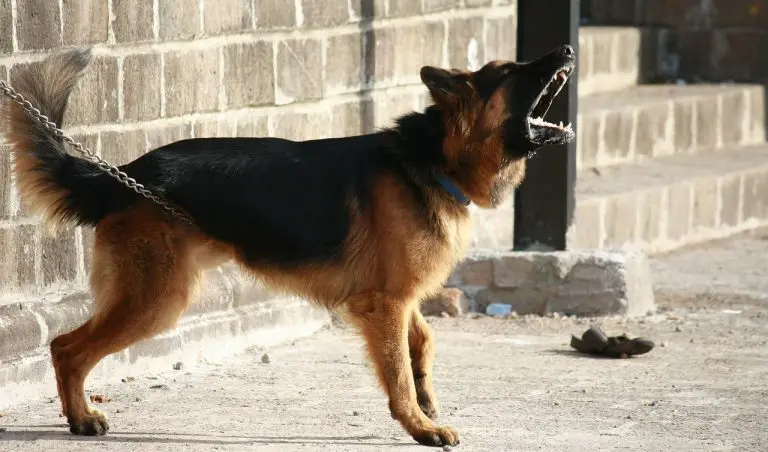If you’re considering getting a long-haired Dachshund, you should be aware of their shedding habits. All dogs shed their fur to some extent, and long-haired Dachshunds are no exception.
However, the specific type of Dachshund you end up getting could determine how much cleaning up you’ll have to do in the future.
So, do long-haired Dachshunds shed a lot? Yes, they do shed just like any dog breed.

What Are Long-Haired Dachshunds?
Few dog breeds are considered as cute and adorable as the Dachshund. The playful dog breed is popular in many countries around the globe, including the United States and the UK.
Dachshunds (also known as Sausage dogs or Wiener dogs) were initially used for hunting and pursuing animals such as badgers, foxes, and rabbits. The first Dachshunds were larger than the breed we see today. However, they were sometimes bred to be smaller in size so that they could pursue digging animals such as rabbits and gophers in their underground tunnels.
Today’s Dachshunds lead more passive lives due to their roles as beloved family pets; however, they have also retained a lot of the hunting characteristics possessed by their ancestors. This is why some modern Dachshunds are still used as small-game hunters.
The more modern Dachshund breeds are smaller than their predecessors were, but they have still retained the paddle-shaped paws that made earlier Dachshunds so adept at digging. Their skin is also relatively loose, which makes it easier for them to slip through underground tunnels without their skin getting caught on tunnel walls and tearing.
The modern Dachshund can be classified into one of three types based on their fur:
- Long-haired Dachshunds: These dogs have long elegant hair, which makes them popular at show dogs.
- Wire haired Dachshunds: This variety has fur that is of intermediate length. This breed is believed to have originated by cross-breeding smooth haired Dachshunds with Terriers.
- Smooth haired Dachshunds: Dogs of this variety have short, smooth, and shiny fur. They are the dogs that people tend to picture whenever they think of a “wiener” dog.
Long-haired and wire haired Dachshunds can be easy to confuse with one another. Healthy long-haired Dachshunds that are groomed regularly tend to have silky smooth hair that is flowy in appearance, while wire haired Dachshunds tend to have shorter hair that is curlier in appearance and rougher in texture.
Each of the Dachshund mentioned above varieties varies based on fur texture, length, and shedding rates. Before we discuss how much each one sheds, we need to understand why dogs shed their fur in the first place.
Here is a video on Dachshund breed of dogs.
Why Do Long-Haired Dachshunds Shed Their Fur?
Shedding is a natural process that is part of the life cycle for hair and fur. Hair shafts will usually grow to a particular length as they mature, before falling off and being replaced by new hair.
Shedding also plays other vital roles, such as helping dogs control their body temperature and protecting their skin from the sun and other external elements.
The phases of hair growth and shedding vary based on the dog’s breed, health, age, environment, and hormones. However, the breed and genetics play the most significant role in determining the kind of fur a dog will have, as well as how often they shed it. These factors also influence the length and texture of the dog’s hair.
When Does Shedding Occur Usually Occur in Dogs?
Some dog breeds such as the Shiba Inu shed their fur throughout the year, while other dog breeds with double coats such as Huskies shed seasonally. Double coats usually include an undercoat that keeps the dog warm and provides waterproofing to a certain degree.
Double coated breeds that shed seasonally are said to “blow” their coats during season changes. This shedding process allows for the growth of a thicker Winter coat during the Fall season to keep the dog warm during cold months.
Given that each Dachshund variety possesses a different type of fur, they are likely to shed at different rates and times as well.

How Often Do Long-Haired Dachshunds Shed?
Dachshunds are a moderate shedding breed. Even at their worst, Dachshunds still manage to shed less than certain heavy shedding breeds such as Labrador Retrievers and German Shepherds.
While each Dachshund variety has its own distinct shedding patterns, the average Dachshund possesses a mix of all three variety’s traits. This can lead to many different variations in coat color and texture that exhibit a range of shedding patterns.
Long-haired Dachshunds shed the most compared to smooth haired Dachshunds and wirehaired Dachshunds. This is due to the high hair density of their inner coats.
Long-haired Dachshunds have lengthy double coats that get thicker before the winter, and thinner before summer. The volume of hair they shed also tends to be greater due to the longer length of their hair.
Wire haired Dachshunds are also double coated, and therefore shed seasonally too. But the volume of hair they shed is usually less than that of their long-haired counterparts. These dogs shed their soft undercoats seasonally, while their wire-like top coats remain intact.
Smooth haired Dachshund possesses a single coat that is shed throughout the year. However, the total volume of hair they shed annually is still smaller than that of the long-haired and wire haired Dachshunds. Owners who are concerned about shedding should opt to get smooth haired Dachshunds due to their lower maintenance and easier grooming requirements.
What Are the Factors That Affect Shedding in Long-Haired Dachshunds?
As mentioned earlier, breed and genetics play the most significant role in determining how much your long-haired Dachshund sheds. However, other factors can influence their shedding patterns and shedding volume to a certain degree. These include:
- Sunlight exposure and temperature
- Health
- Allergies
- Nutrition
- Cleanliness
- Hormones
- Pregnancy
Sunlight exposure and temperature can have significant effects on your dog’s shedding patterns. Double coated dogs such as long-haired Dachshunds shed in response to environmental conditions such as day length and the amount of sun exposure they receive per day.
Shorter days and cooler temperatures can promote the growth of your dog’s undercoat, while longer days with more sunlight and warmer temperatures tend to thin out the undercoat.
Family pets usually spend most of their time indoors, so their seasonal shedding habits may change to ones where they shed throughout the year. These changes can also cause them to shed less during season shifts.
Their health could also influence the shedding frequency for long-haired Dachshunds. Unhealthy dogs with parasites and worms often shed more than healthy parasite-free dogs. This is because parasites and worms tend to absorb nutrients from the dog’s skin, which leaves the skin dry and hair follicles undernourished.
As a result, the hair on these unhealthy dogs will fall off at unusually high rates. If you see your dog shedding far more often than usual, you should consider checking them for worms.
Some long-haired Dachshunds tend to suffer from allergies that make them itch uncontrollably. Fleas allergies are relatively common and often cause dogs to pick at their hair while looking for relief. Long-haired Dachshund owners that see their dogs excessively picking and scratching at their fur should look for fleas and apply anti-flea medication.
Diet plays a significant role in maintaining the health of your Dachshund’s fur. While most store-bought dog foods contain some amount of nutrients, Dachshund owners should check to see if their dogs are receiving enough absorb able proteins, carbohydrates, and Omega 3 and 6 fatty acids in their diet. These nutrients can nourish the dog’s coat and prevent the hairs from becoming thin and brittle.
Dogs that are bathed and cleaned regularly also shed less than dogs whose cleanliness is neglected by owners. Dog hair that is caked in the dirt is more susceptible to the growth of bacteria, and this bacteria could in-turn, damage hair follicles, and cause excessive hair loss.
Owners should bathe their long-haired Dachshunds using gentle pet shampoos at least once every three months to discourage these bacterial skin conditions from developing.
However, washing your dog more than twice a month could irritate their skin and damage their hair follicles, so dog owners need to be careful about finding the optimal washing frequency that keeps their dogs healthy and clean.
Many hormones can affect the rate of hair growth and shed in dogs. Thyroid hormones, in particular, are believed to stimulate hair follicles and increase the duration of the dog’s hair growth phase compared to their hair resting phase.
Long-haired Dachshunds with thyroid issues tend to have thinner and drier coats that are shed more frequently. Owners can help treat thyroid deficiencies by giving their dogs Thyroxin.
Other hormones, such as testosterone, estrogen, and cortisol, can also affect the health of their fur and alter their shedding frequency.
Female long-haired Dachshunds may shed more frequently while they are pregnant, and while they are nursing their pups. This is related to the depletion of nutrients that occurs during pregnancy and lactation.
Owners should provide these dogs with more nutrients and supplements to ensure their coats remain healthy and strong during those times.

How to Identify Abnormal Shedding Patterns in Long-Haired Dachshunds?
Dachshund owners should look out for certain kinds of shedding as they could indicate serious health issues. Abnormal shedding patterns include:
- Hair that falls off in patches.
- Uneven hair loss on certain parts of the Dachshund’s body.
- Irritated skin close to areas with hair loss.
- Thinning coats and bald patches that are easily visible.
- Excessive scratching and rubbing against objects/furniture.
- Dry hair that falls out quickly.
If your Dachshund is showing a combination of the signs as mentioned earlier, you should take them to a vet to have their skin examined for any diseases or conditions.
Tips for Dealing With a Long-Haired Dachshund’s Shedding Patterns
Unfortunately, there is no way of completely stopping your long-haired Dachshund from shedding. It’s a natural process that serves many vital functions, so Dachshund owners should learn to adapt to their dog’s shedding patterns.
The lush and elegant locks of a long-haired Dachshund’s fur can be tricky to maintain without regular grooming and de-shedding. These dogs shed primarily in spring and autumn, so owners may have to de-shed their long-haired Dachshund’s fur during these seasons, or risk clumps of hair accumulating around their homes.
De-shedding refers to the process of removing your dog’s loose undercoat hair manually. This hair tends to get caught in the breed’s topcoat during the natural shedding process. Such hair can fall off at random and create a mess around your home or get stuck to people’s clothing.
Dachshunds are not a hypoallergenic breed, so the hair they shed could cause people’s allergies to act up. Dog hair itself does not cause allergies, but the dead skin cells on hairs are known to aggravate people’s allergies.
Dog owners can reduce the amount of mess their dogs produce from natural shedding by de-shedding their dogs themselves using brushes and other grooming tools. This gives owners more control over their dog’s shedding habits and minimizes the problems created by loose dog hair in their homes.
How to Groom Your Long-Haired Dachshund by Yourself?
Many long-haired Dachshund owners choose to de-shed and groom their dogs themselves. This process can be relatively easy if your dog is comfortable being handled and brushed. The steps for de-shedding and grooming your long-haired Dachshund are the following:
The first step is to brush your long-haired Dachshund using the right kind of brush. Slicker brushes are great for de-shedding dogs with long hair. They feature rows of thin wire pins that are closely spaced and are effective at removing loose fur and de-tangling clumps.
Dog owners should remember not to apply too much pressure when using this brush, as the wires could irritate their dog’s skin.
Another brush type that’s useful for de-shedding long-haired Dachshunds is rake brushes. These brushes help remove hair from long and heavy coats. They are usually T shaped and feature two or three rows of closely spaced pins.
If your long-haired Dachshund isn’t a fan of brushes, you could use a shedding glove to make them more comfortable with the brushing procedure. Dog owners can wear these gloves and stroke their dogs in a supportive manner that also removes loose hair from their coats.
The de-shedding process can be made easier by bathing your dog. Wet hair is generally easier to brush and untangle, so long-haired Dachshund owners could get better grooming results by washing their dogs before brushing and de-shedding them.
After bathing and drying your long-haired Dachshund, owners should brush them one more time. This is to smoothen out any clumps or tangles that could have been created while drying them with a towel.
If your long-haired Dachshund has fur that is hard to manage, you should consider taking them to a professional groomer for a haircut.
In addition to trimming your long-haired Dachshund’s hair, professional groomers can de-shed their undercoats thoroughly as well. They possess a variety of grooming tools to ensure your dog’s fur is free from tangles and clumps.
These services could be especially useful if you don’t have the time to groom and de-shed your dog yourself. Dog hair that has been professionally groomed should be easier to brush and de-shed at home too.
Watch this video on how to groom a long-haired Dachshund.
How to Cope Living With a Long-Haired Dachshund When You Have Allergies?
As mentioned earlier, there is no way to stop a long-haired Dachshund from shedding completely. However, if you suffer from allergies and share a home with a Dachshund, you can take some measures to make your life a bit easier.
You can reduce the amount of Dachshund hair scattered around your home by vacuuming and wiping down surfaces regularly. Thick fabrics such as cushions and rugs should be washed and vacuumed every few weeks.
Owners with allergies should keep their Dachshund away from their bedrooms to minimize the amount of pet hair that gets onto their beds. This can be done by keeping the bedroom door shut as often as possible, or by training your Dachshund to avoid entering the room.
Dachshund owners that are interested in reducing the number of pet allergens in their home could also invest in a high-performance air purifier. These are effective at filtering out pet hair allergens and reducing the number of particles wafting through the air in your home.
Understandably, dog owners would want to avoid parting with their compact companions due to allergies. So these measures are a great way to ensure you and your long-haired Dachshund can live together comfortably for years to come.
Conclusion
Long-haired Dachshunds make lovely and adorable pet companions, even with all their shedding habits. Remember that you can always get dog food for your long-haired Dachshunds that helps with shedding.
If you’re taking care of your Dachshund’s nutrition, bathing and grooming him regularly, and getting it inspected by the vet every time you notice any any thing strange, you won’t have to worry about having a lot of pet hair around at your home.







